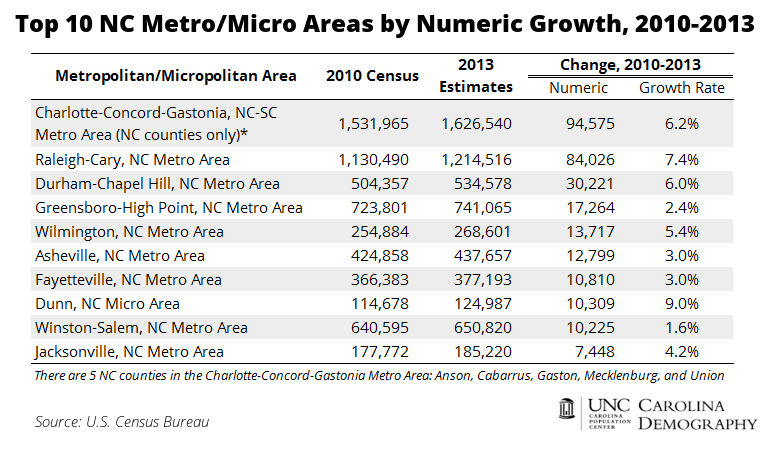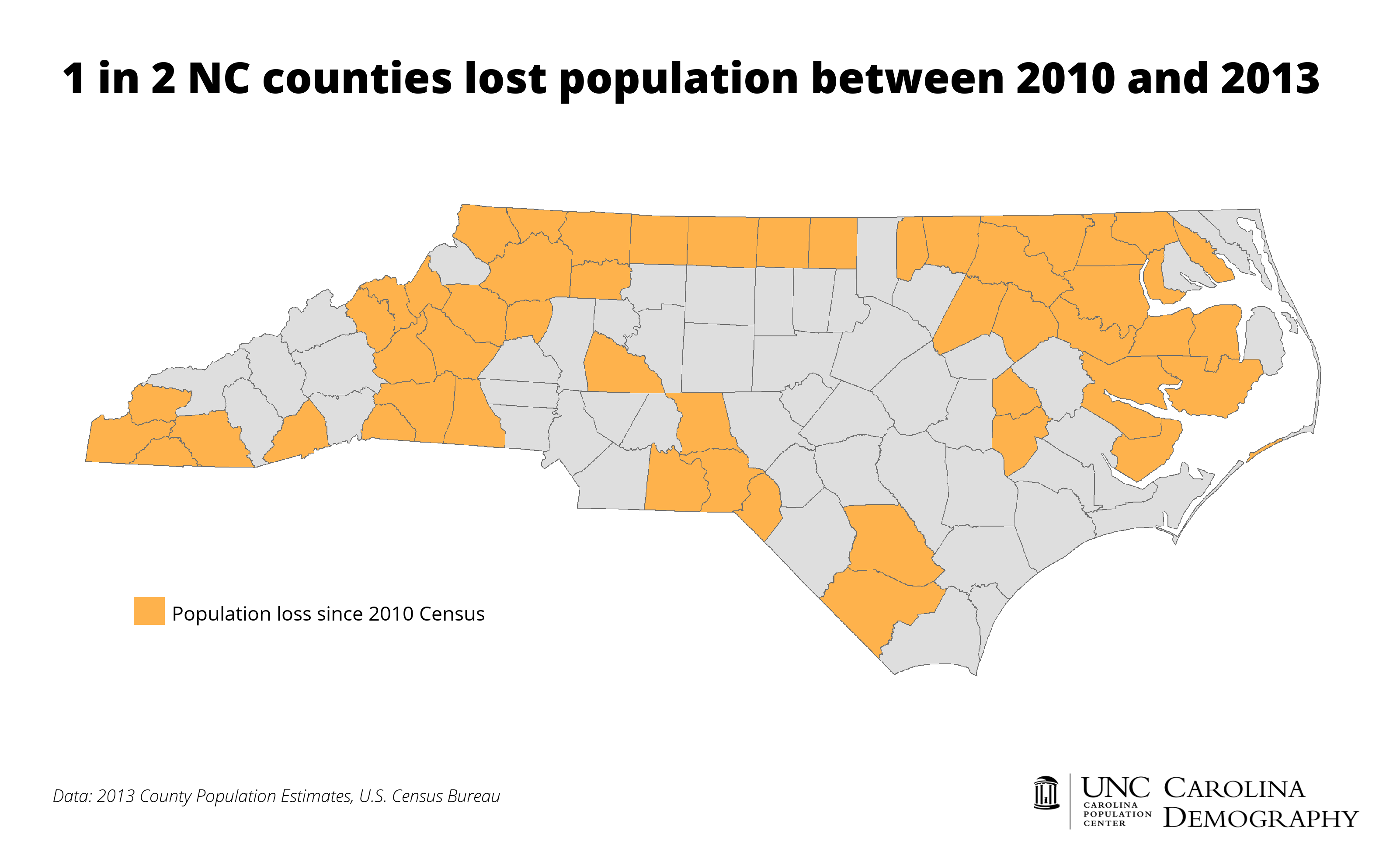In the three years following the 2010 Census, North Carolina’s population grew by nearly 313,000 residents. With today’s release of the 2013 county population estimates from the U.S. Census Bureau, we can now examine where in the state this growth occurred.
Here’s what you need to know:
1. Charlotte and the Triangle accounted for 67% of NC population growth.
Two-thirds of state population growth occurred in the 12 counties that make up the Charlotte and Triangle regions. As shown in the table below, Charlotte grew by 6.2% since 2010, gaining a total of 94,600 new residents. The Triangle region—comprised of Raleigh-Cary and Durham-Chapel Hill metro areas—grew even more, gaining a total of 114,200 new residents and growing by 7% over the past three years.
Within these areas, the population behemoths remain Mecklenburg and Wake counties. Each county’s population has grown by more than 70,000 since 2010; together they accounted for nearly half (45%) of the state’s total growth.
2. Nearly all of the state’s growth occurred in urbanized areas.
93% of North Carolina’s population growth since 2010 occurred in the 10 metropolitan or micropolitan areas listed in the figure below.
Of the state’s 26 rural counties in neither a metropolitan nor micropolitan statistical area, only 3 – Duplin, Sampson, and Swain – have gained population since 2010.
3. 1 in 2 North Carolina counties have lost population since 2010.
Half of North Carolina counties had fewer people in 2013 than they did in the 2010 Census. While population losses were heavily concentrated in rural counties, being part of a metropolitan or micropolitan region was not a guarantee of population growth.
4. Migration drove population growth—and loss—throughout the state.
Migration was the dominant factor in population change in 85 counties.
Thirty-four counties grew by both net in-migration and natural increase (more births than deaths). In these counties, migration accounted for 65% of population growth since 2010. In 8 other growing counties, such as Brunswick, net in-migration was high enough to counter the impact of population aging and natural decrease (more deaths than births).
Among declining counties, 28 experienced population losses due to both net out-migration and natural decrease. In these counties, migration accounted for nearly 70% of population losses since 2010. Another 15 counties that lost population between 2010 and 2013 had more births than deaths, but lost population overall due to net out-migration.
5. Mecklenburg and Wake Counties will break 1 million population by 2015.
As of July 1, 2013, Mecklenburg’s population was 991,000 and Wake’s was 974,000. In every year since 2010, each county has grown by well over 20,000 new residents.
At this pace, Mecklenburg should break the million mark in the July 1, 2014 population estimates. Wake has a little further to grow, but will be pushing close to 1 million in 2014; it might not officially hit the million mark, however, until the July 1, 2015 numbers.
Either way, expect these counties to break, and surpass, the million mark by mid-decade.
Your support is critical to our mission of measuring, understanding, and predicting population change and its impact. Donate to Carolina Demography today.